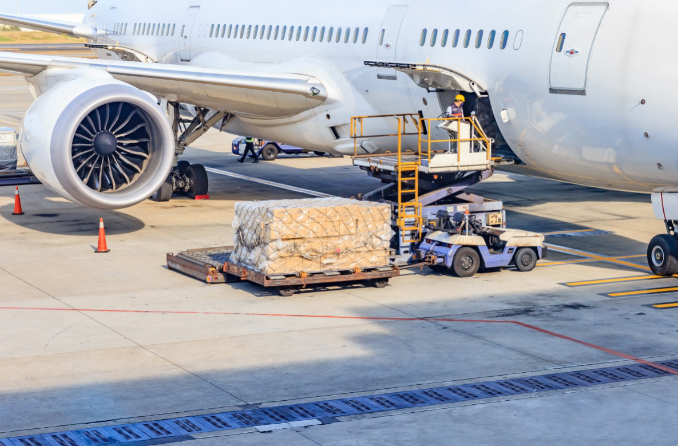
IOE&IT director general Marco Forgione here assesses disruption in global shipping and supply chains and ponders whether an increased use of air freight is a viable, long-term solution for traders.
Last week I was asked to speak to a journalist from the Sunday Telegraph about the rise in the use of air freight in relation to the current supply chain crisis engulfing the world.
This is something we have been aware of here at the Institute of Export & International Trade (IOE&IT) for some time, with companies looking for ways to avoid soaring ocean freight prices and to avoid the backlogs of ships waiting outside seaports around the world.
It has been hard to escape the images on the news of shipping ports across the world struggling to keep up with levels of goods being delivered. Many companies work on a just-in-time basis so any delay in the supply chain can have serious consequences for their business.
Air freight – new trend or short-term fix?
When speaking with the Telegraph they were interested to know if the IOE&IT thought the increased use of other modes of transport – like air and rail – would be a long-term trend or a short-term fix to the current issues being experienced with shipping.
To answer this accurately we must first assess the market conditions that have led to an increase in air freight shipping in the first place.
Shipping capacity and challenges at ports have resulted in longer lead times for vessels transporting goods from East to West and businesses need quick solutions to keep their products moving.
What we have seen over the past 18 months during the Covid-19 pandemic is diversification in the way global value chains operate.
Pandemic impact
When the world came to a standstill last March, commercial airlines modified their planes to deliver valuable PPE and other goods all around the world.
Passenger numbers on commercial flights are still well below their pre-pandemic levels and airlines are diversifying their business models to reflect this. Now we are seeing the price of air freight rise too two-and-a-half times their pre-pandemic levels.
Expensive
Airfreight has always been a popular form of transport for time-sensitive goods that need to quickly reach consumers, such as, pharmaceuticals, fresh food etc.
However, there is a cost attached to this, with estimates by the World Bank suggesting air freight is usually four to five times more expensive than road transport, and up to 16 times more than sea.
The type of goods being transported by air freight has changed as well, and companies are willing to pay more to ensure their goods do not experience lengthy delays in delivery. With the Christmas period nearly upon us clothing retailers and toy manufacturers are sending their products by air to ensure they hit the shelves in time for the biggest commercial holiday of the year.
This loss in trade would be disastrous for these businesses, but the increase in freight costs is certainly taking a healthy chunk out of their potential profits. Also, there are size limitations when sending goods by airfreight with shipments unable to exceed 1.7 meters in height.
Here to stay
The nature of airfreight can certainly accelerate the delivery of goods and the ability to go directly from point A to B, without crossing multiple borders, is certainly an attractive alternative to the current shipping situation.
Given the additional documentary requirements for sending goods over multiple borders by other modes of transport (like rail and road), the fully integrated documentation services offered by delivery giants like TNT, DHL and FEDEX are also a clear benefit for traders.
A good indicator that the increase in the use air freight in the supply chain is here to stay can be seen by looking at the orders aerospace manufacturers have received to build new planes. At the Dubai Airshow, which took place a few weeks ago, manufacturers like Airbus and Boeing announced tens of billions of dollars of orders for cargo versions of their most popular jets.
It seems from this key indicator that air freight will play a bigger part in the global supply chain going forwards.
Knock-on effects
This fact has not escaped the largest shipping companies with the Telegraph reporting last Sunday Maersk’s announcement that it is building up its air freight capacity as part of its efforts to make its supply chain offering more resilient.
The Danish logistics firm is buying Senator International, a Hamburg-based freight forwarder that operates around 19 flights a week. On top of that acquisition, it announced plans to expand its own fleet with three leased planes for next year and by buying two new Boeing 777 aircraft that will be in action in the next two years.
Compliance is key
To conclude, it does seem like the use of air freight will be a more prevalent player in the global supply chain in the future. However, the increased costs in air freight shipping could mean higher prices for the consumer at the other end of this supply chain.
The most important thing for businesses to remember, regardless of the method of transport they use to ship their goods, is to remain compliant.
The IOE&IT is here to help companies navigate these supply chain issues and ensure that you are fully compliant with whatever method of transport you use and wherever in the world your goods are shipped.



